Baaeed cements his claims as the world’s best racehorse
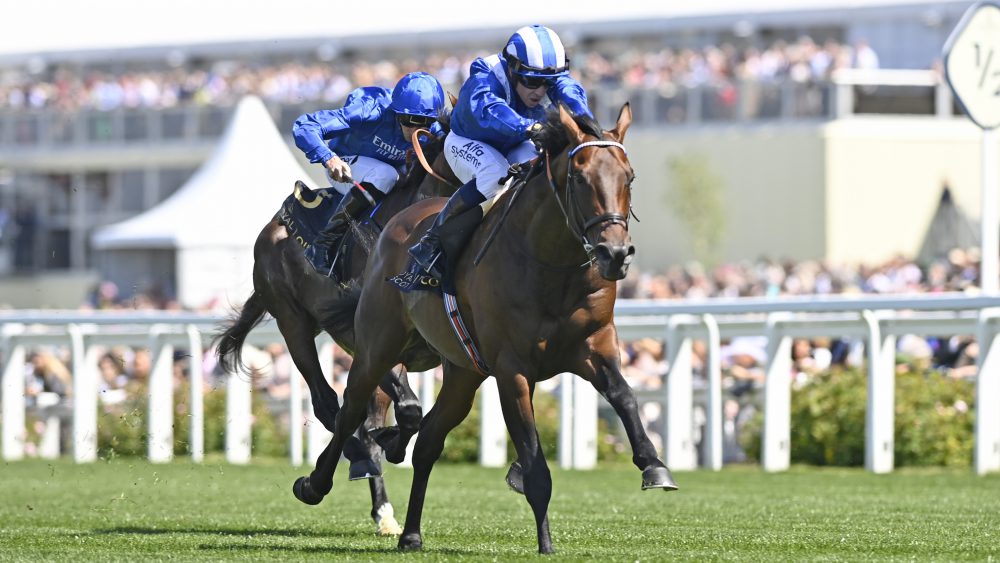
As the BHA handicapper charged with looking after the top mile races, it has always been my personal opinion that the first day of Royal Ascot is the best day, featuring Group 1 races for both the best older milers and their 3yo counterparts, supported by top notch sprint action in the Kings Stand and the best of the early juveniles in the Coventry. This year’s opening day proved a cracker with two of the best performances seen anywhere in the world so far this year, writes Dominic Gardiner-Hill…
In last month’s interim list of the IFHA’s world’s leading horses, Baaeed topped the pile after his success in the Lockinge at Newbury, but competition for that particular accolade is starting to hot up. Australian sprinter Nature Strip threw his hat in the ring with his demolition of the King’s Stand field, and up-and-coming American dirt star Flightline stated his case with an easy success in the Metropolitan at Belmont on the Saturday prior to Royal Ascot. The next edition on July 14th should make interesting reading.
I will let my colleague Chris Nash discuss the merit of Nature Strip’s performance but for me Baaeed recorded a personal best with his smooth success in the Queen Anne, taking his career record to a perfect eight wins from eight starts. His increased superiority over Chindit and Sir Busker from the Lockinge suggests this was a better performance, whilst Order of Australia (third) had solid enough form in the mid-teens in a number of Group 1 contests last year to also support Baaeed’s new mark of 128 – a figure that is the highest recorded in the race since the turn of the century bar Frankel’s eyewatering exhibition (140) in 2012. This level also suggests runner-up Real World has run a personal best as well, which may cause one or two to crab the form. However, he finished closer to Baaeed than he did in the Lockinge and also increased his own superiority over Chindit and Sir Busker, so I have no problem with giving him credit until it is proven or disproven further down the line – and let’s not forget that, but for Baaeed, Real World’s record on turf would read seven from seven!
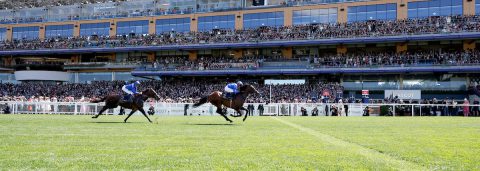
Baaeed and Jim Crowley winning The Queen Anne Stakes
There are clearly no older milers in Europe to trouble an on-song Baaeed so the main threat will have to come from the 3yos. Leading colt Coroebus followed up his 2000 Guineas win with a narrow success in a messy St James’s Palace but in beating horses with pre-race ratings of 113, 114, 113, 110 and 111, and with only around two lengths covering the first seven home, I don’t believe he came close to reproducing his Newmarket figure of 121. Nevertheless, he is still the leading 3yo miling colt in Europe based on his Guineas success, although some may well be of the opinion that Maljoom, who looked desperately unlucky at Ascot, might prove the bigger threat to Baaeed if he weren’t also trained by William Haggas!
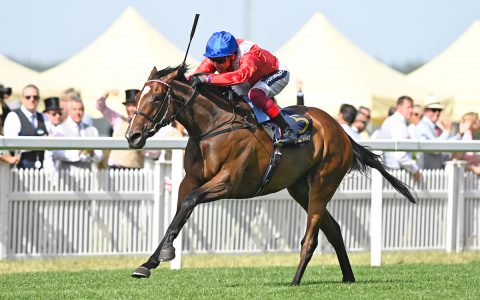
Inspiral and Frankie Dettori win the Coronation Stakes at Ascot Racecourse
Bigger threats may well lurk amongst the 3yo fillies and it was great to see last year’s leading 2yo filly Inspiral back on the track and maintaining her unbeaten record with an impressive success in the Coronation Stakes on Friday, a race that contained plenty of quality, including the winners of both the English and French 1000 Guineas. This stacks up as a top quality performance historically as Inspiral’s figure of 121 is bettered only by Alpha Centauri’s 122 (2018) in the race since the year 2000. Irish filly Homeless Songs is rated 120 after her easy success in the Irish 1000 Guineas and a match-up between her and the Gosden filly at some point in the coming months is an exciting prospect.
Many hoped the Prince of Wales’s on Wednesday would see the arrival of the progressive Bay Bridge at the top table but he couldn’t get past the admirable State of Rest who was given a masterful front-running ride by Shane Crosse and is now a Group 1 winner in 4 different countries and both hemispheres – a mark of 123 is a career high for the Joseph O’Brien-trained colt and it will be interesting to see if he can reproduce it when he doesn’t get things quite so easy on the front end.
Young guns come out on top in dramatic Gold Cup
As was also the case a year ago, much of the discussion after the Gold Cup focussed on the in-running trouble endured by three-time race winner Stradivarius, but there’s little doubt that up-and-comer Kyprios was himself a very worthy winner of the race, and he may well now go on to establish himself as the new star of the staying scene, writes Adam Barnes…
This year’s Gold Cup was steadily run and something of a messy race, but the right sort of horses still ultimately came to the fore, and the form looks to make a fair bit of sense. Kyprios deserves plenty of credit for coming out on top, overcoming a wide trip and, despite stepping up significantly in distance, leaving the impression at the line that a truer test of stamina might have seen him in an even better light. Historical comparisons point towards a winning performance this year in the region of 118-120, and I have assessed Kyprios as running to 119, with every chance that he can do better yet given he’s a highly progressive four-year-old who didn’t have everything go his way here.
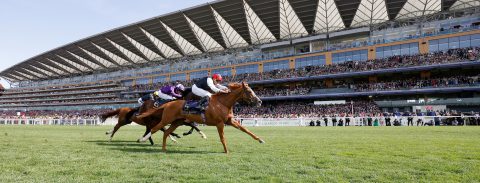
Kyprios and Ryan Moorewinning The Gold Cup
As runner-up in both the Derby and St Leger last year, fellow four-year-old Mojo Star brought plenty of class and intrigue to the race. Returning to action after over eight months off, he ran a cracking race in defeat, picking up well from further back than ideal to briefly edge ahead but ultimately not quite as strong as Kyprios where it mattered most. His rating goes up 2 lb to 118. Like the winner, Mojo Star probably has the potential to improve again as a stayer, with his blend of speed and stamina likely to prove quite a potent combination, including when encountering slightly less-extreme distances than the two and a half miles of the Gold Cup.
It was a pity that Stradivarius – having his last attempt at landing a fourth win in this contest – didn’t get a clear run at a crucial stage of the race, leaving questions over what might have been. Frankie Dettori had to pull back and switch left for a run two furlongs from home, after which Stradivarius stayed on well but was never quite doing enough to reel in the younger legs of Kyprios and Mojo Star. Although his connections and supporters might feel differently, I think it would be something of a stretch to say the in-running trouble cost Stradivarius victory. Despite sticking on valiantly, he didn’t make any great impression on Kyprios in the final one and a half furlongs, with sectional times showing that he ran slower than the winner from two furlongs out to the line, as well as over the final furlong in isolation. I assessed Stradivarius as running to 117+ on the day and he remains on a mark of 118, the same as Mojo Star.
Aussie raider Nature Strip dominant in King’s Stand
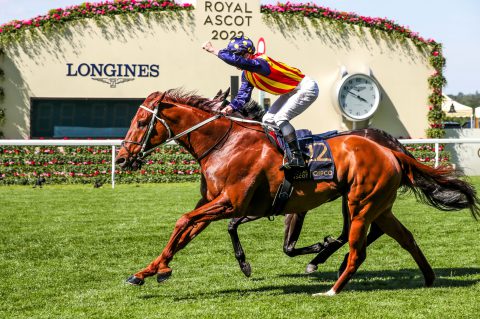
Nature Strip and James McDonald winning The King’s Stand Stakes
The Group 1 King’s Stand Stakes saw a dazzling performance by the Australian-trained Nature Strip who managed to come home four and a half lengths and upwards clear of the rest, writes Chris Nash…
Nature Strip arrived at Royal Ascot as the highest-rated sprinter in the world on a mark of 124 and he fully justified that status with this demolition job. He always raced handily, was in front travelling best two furlongs out and kept rolling from there to come home clear. Nature Strip’s margin of victory equates to a superiority of 16 lbs over the runner-up, Twilight Calls. Applying race standards to the contest gives a figure of 125-126 for the winner and that ties in well with the pre-race rating of Twilight Calls (110). I settled on a figure of 126 for Nature Strip, which makes this performance a career best.
A rating of 126 is the best performance in the race this century, surpassing the 122 recorded by Lady Aurelia in 2017 – she was a filly, so with her 3 lb allowance added back in that equated to a 125 performance by a colt or gelding. Comparisons will no doubt be made with Battaash, the dominant British-trained sprinter in recent times. He won the King’s Stand in 2020 running to a figure of 120, which was subsequently downgraded to 119. However, he was always at his best on speed-favouring tracks and had a peak (internationally agreed) end of season rating of 126 in 2019.
Naval Crown is Platinum Jubilee king
This year’s renewal of the Group 1 6f Platinum Jubilee Stakes attracted a truly global field – no less than five different countries were represented amongst the twenty-four runners – with the market headed by one of the Australian challengers, Home Affairs, writes Stewart Copeland…
Unlike his compatriot in the King’s Stand, the mightily impressive Nature Strip, Home Affairs failed to translate his form from Down Under and instead the prize was kept at home, with a one-two for Charlie Appleby courtesy of Naval Crown and Creative Force.
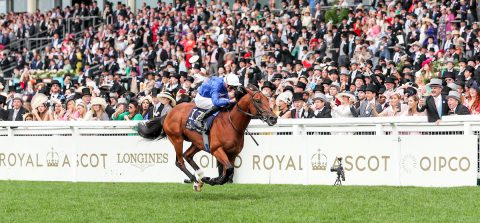
Naval Crown and James Doyle, winning The Platinum Jubilee Stakes,
Looking at the race beforehand, it was well up the standard I’d expect – the field was the joint-largest this century, on a par with the 2010 renewal – and in assessing it afterwards, that view remains the same.
The field split into two groups, with Home Affairs leading the charge up the stands side and the American challenger, Campanelle, leading in the centre. There was very little to choose between the groups, with the stands side shading it to halfway but little in it from then on. The fractions were solid throughout and the overall race time was highly creditable.
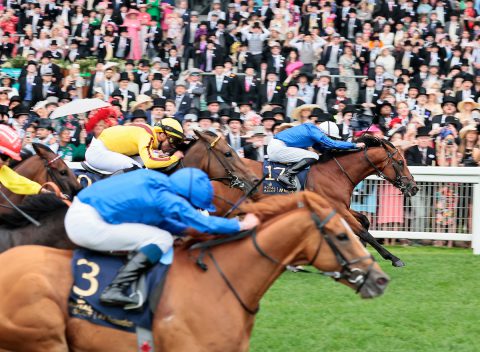
Naval Crown & James Doyle wins from Creative Force & William Buick
The winner, Naval Crown, has mainly plied his trade over seven/eight furlongs to date but had shown promise on his debut at this trip with a creditable effort in the Group 1 Al Quoz Sprint at Meydan back in March. The decision to persist at six furlongs was fully vindicated with Naval Crown putting up a career best, relishing the stiffer test at the trip that Ascot provided. Having tracked Home Affairs on his side, and being ridden over 2f out, he stayed on strongly to deny his better-fancied stablemate by a neck.
Creative Force fared best of the centre group, finishing half a length in front of the other Australian challenger, Artorius, and pacesetter Campanelle, who dead-heated for third. Artorius was arguably the one horse who could be marked up as he was momentarily short of room inside the final furlong when challenging strongly from off the pace.
In terms of ratings, it looks a straightforward race to assess. The average winner of the race is 118, and Naval Crown looks fully deserving of that mark. It ties in neatly with the pre-race level of several of his opponents, so there’s no reason not to credit him with a career-best effort, having gone into the race rated 112. Creative Force went into the race rated 118, and even though I have him running to 117 in ‘winning’ his group, he will remain on his pre-race mark.
As for the dead-heaters in third – Artorius has put up a career best in running to 116 and Campanelle, who produced a valiant effort in trying to make it a hat-trick of Royal Ascot wins, ran right up to her best of 113.
Around twenty-four hours earlier, the Group 1 6f Commonwealth Cup took place. Even though the race has a relatively brief history, it has quickly established itself as an important race in the three-year old calendar. The Commonwealth Cup has already been contested by some excellent sprinters – Muhaarar, Harry Angel and Blue Point to name but a few – and this year’s winner, Perfect Power, signalled he will be a strong contender for his age-group when taking on the older brigade later in the campaign
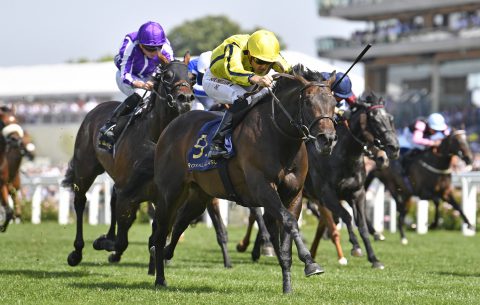
Perfect Power wins the Commonwealth Cup
Having already notched two Group 1 successes as a juvenile, Perfect Power made it a hat-trick of wins at the top level with an impressive performance. Held up off the pace, he came with a strong run from two furlongs out to lead inside the last, winning by a length and a quarter from Flaming Rib, with the filly Flotus a further half-length back in third.
The average winning rating for the Commonwealth Cup is 116, but I’ve taken a slightly more positive view for now with a revised rating of 117 for Perfect Power, up 2 lb from his pre-race 115. That level looks perfectly justified on those he beat, and given the manner of his victory, there is the promise of more to come.
With Nature Strip heading back home to Australia, it leaves the sprinting division looking wide-open based on what the above protagonists achieved in their respective races at Royal Ascot. Next stop will be a clash of the generations in the July Cup and it’s difficult to split them at this stage. However, I think it’s fair to say that toppling Nature Strip at the top of the world sprint rankings will take some doing!
Not Brad at all
Royal Ascot is always a key fixture in the two-year-old season, pitting just about all the best early-season form lines against each other. The picture will continue to clear in the weeks and months ahead but for the time being I have Bradsell rated as the best juvenile seen so far courtesy of his Coventry success, writes Graeme Smith…
In what looked a potentially strong Coventry beforehand, the finish was duly fought out by some of the ‘could be anythings’ and the time (worked out through our internal standard times) backed up a positive view – the evidence of the clock alone would have endorsed a figure a fair bit higher than the 112 I have Bradsell achieving.
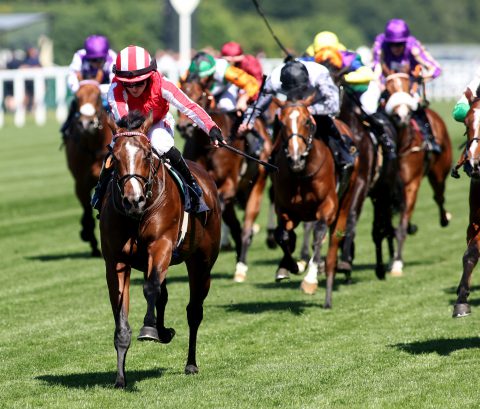
Bradsell and Hollie Doyle (red) winning The Coventry Stakes
A nine-length winner at York on his previous start, Archie Watson’s son of Tasleet is currently rated behind only Calyx (115) among the last half-dozen winners of the Coventry. The future looks bright for the British-trained juveniles in general with the home team responsible for the first three.
Persian Force met with his first defeat but improved his form in the face of his sternest test to date. He raced well away from the winner and third and may do better again. Third-placed Royal Scotsman had run out an impressive winner at Goodwood last month, but he’d been put in his place by Noble Style on their respective debuts at Ascot earlier in May and both his performance and that of Norfolk runner-up Walbank underlines just how much potential that Godolphin colt has, assuming the issue that kept him out of the Royal meeting isn’t serious.
Blackbeard went off favourite in his attempt to give Aidan O’Brien his tenth Coventry success but looked a less potent force than when winning the Group 3 Marble Hill. It may be that firmer ground wasn’t ideal, though I get the impression a seventh furlong will probably help him.
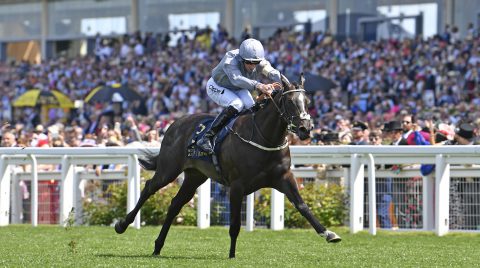
Dramatised (Danny Tudhope) wins the Queen Mary Stakes
We were rather spoilt in the first two juvenile races of the week as, come the Queen Mary, Dramatised put up one of the best performances by a two-year-old filly at Royal Ascot in the last decade as she led home a relatively strung-out field in another strong time. These things tend to be measured against the 121 Lady Aurelia achieved in the same race back in 2016 but, aside from that, only Kiyoshi’s Albany-winning 112 performance in 2013 stands in advance of what Dramatised achieved in beating Maylandsea and Maria Branwell by one and three-quarter lengths and three lengths respectively. It’s worth noting that the latter had already won in listed company outside of her own sex in the National Stakes, and the runner-up that day, Crispy Cat, would likely have finished second in the Norfolk but for being hampered. Both races suggest 6f could bring even more from Maria Branwell.
Dramatised’s debut success had been endorsed several times over prior to Ascot, and while she’s clearly not short of speed, she gives the impression she’ll be just as formidable at 6f.
Wednesday’s Windsor Castle returned a relatively ordinary time (92) in comparison to the Queen Mary despite being run in a relatively similar pattern as far as finishing speeds go. Aidan O’Brien got off the mark for the week courtesy of the handsome Little Big Bear (103 on my figures, though his mark is a decision for my Irish counterpart), and he promises to be at least as effective when given a chance at longer trips.
Rocket Rodney (102) continues to look speedy, and he proved himself useful in finishing a decisive second on the opposite side of the pack to the winner.
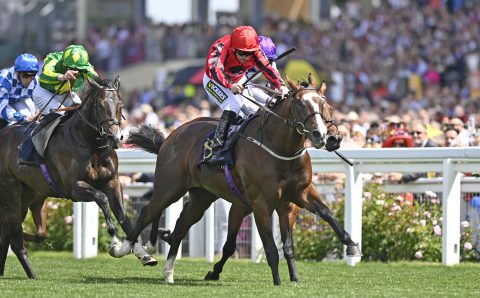
The Ridler (Paul Hanagan) wins the Norfolk Stakes
The Norfolk finish provided something of a talking point due to the interference The Ridler caused when playing is hand. I’m confident Richard Fahey’s colt would have provided his stable with its second straight success in the race following Perfect Power even if he hadn’t impeded others, so strongly did he hit the line. His figure of 108 suggests he’s well up to standard for the race, even if the time was only fair judged against the Britannia.
There’s plenty to like about Albany winner Meditate – she’s straightforward and clearly stays 6f very well – but even though beating the exciting-looking Mawj by nearly two lengths, it’s hard to escape the conclusion that this was a below par renewal in terms of form on the day. A margin of only six lengths to the tenth is low historically, and 103 for Meditate on my figures has her the joint-lowest winner since the race’s inception. Saying that, good fillies may well emerge, and I thought both Elvenia (seemingly in need of further, though maybe green) and Cathy Come Home (poorly drawn and longer trips should suit) both shaped with promise for the future.
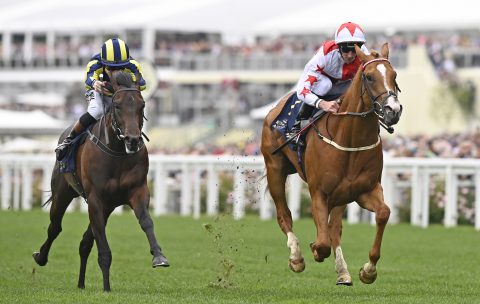
Holloway Boy (Danny Tudhope) wins the Chesham Stakes
The hardest race of the week to rate was the Chesham. Outsiders came to the fore as the market leaders flopped so it’s hard to know what to make of it, but the time was a strong one and Holloway Boy created a good impression on his debut, producing a sustained run from the rear and still strong at the line. I have him pencilled in at 104 but he’ll need to run again before he’s eligible for a mark and I expect to be making adjustment to the race before I fully commit.
As is the case every year, the passing of Royal Ascot brings the dawn of the nursery season. In preparation, 252 two-year-old ratings were published this morning and the first nursery is scheduled for Haydock on Saturday July 2nd.
